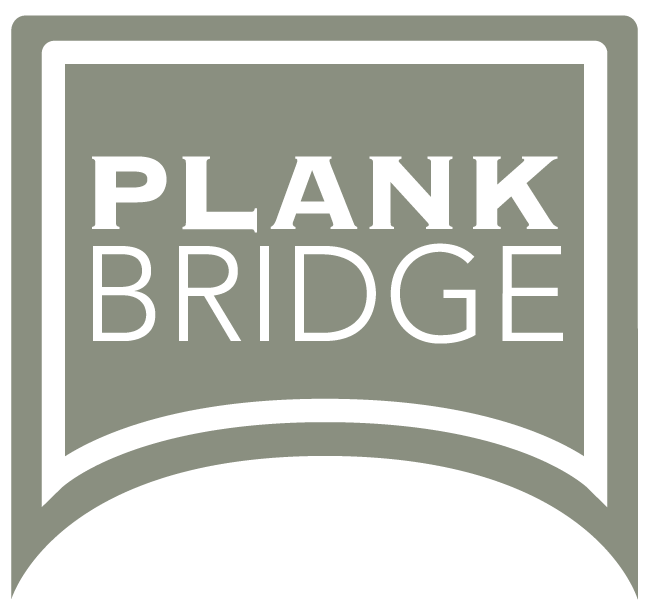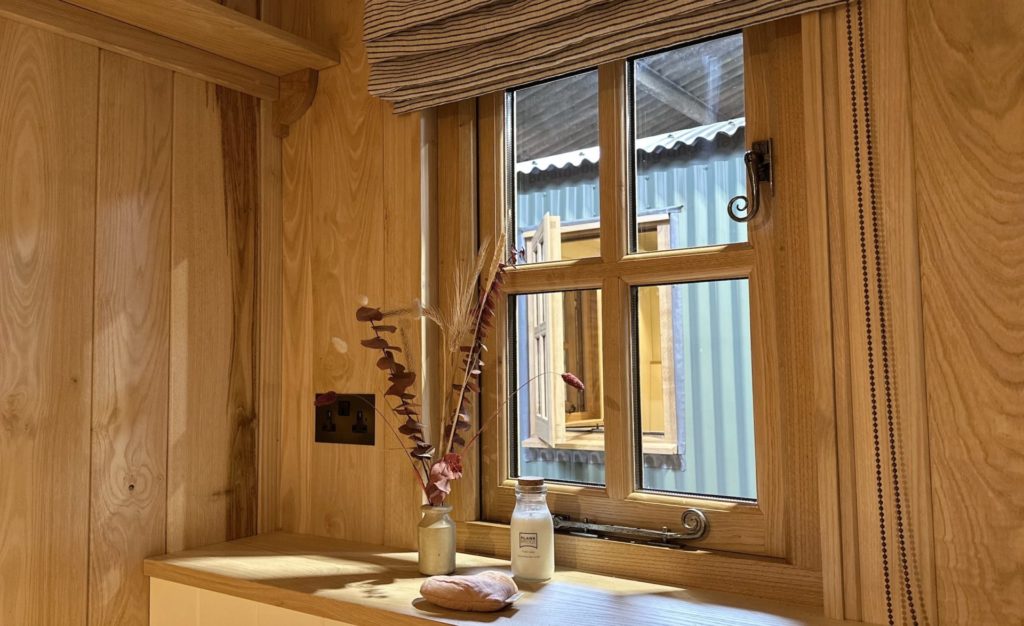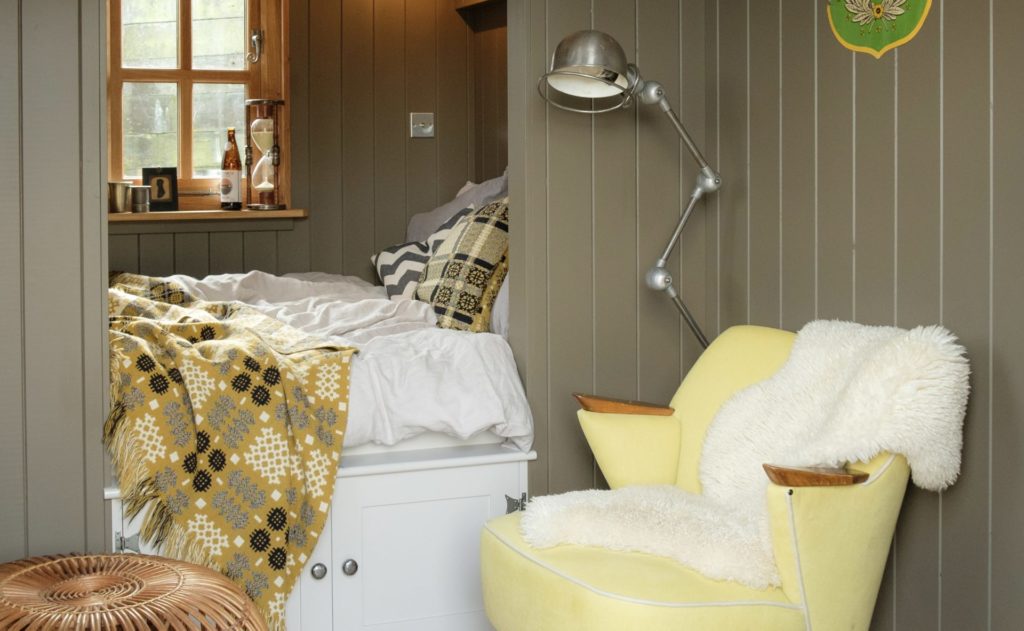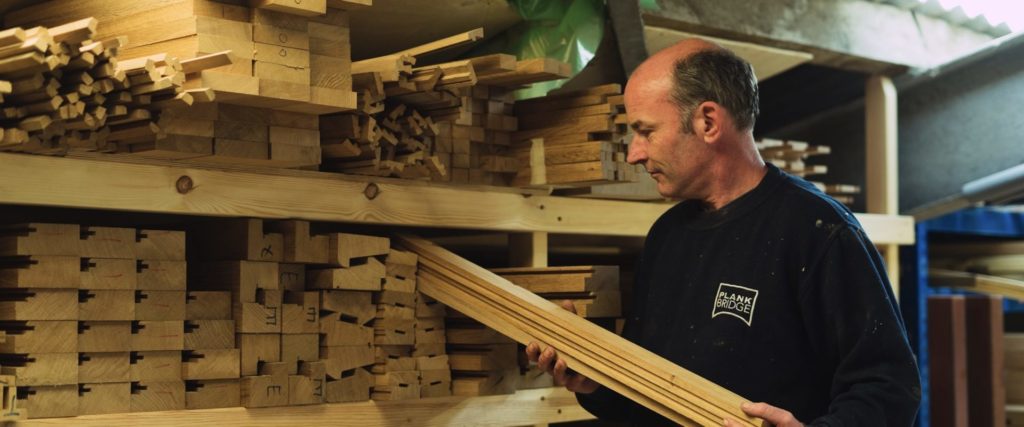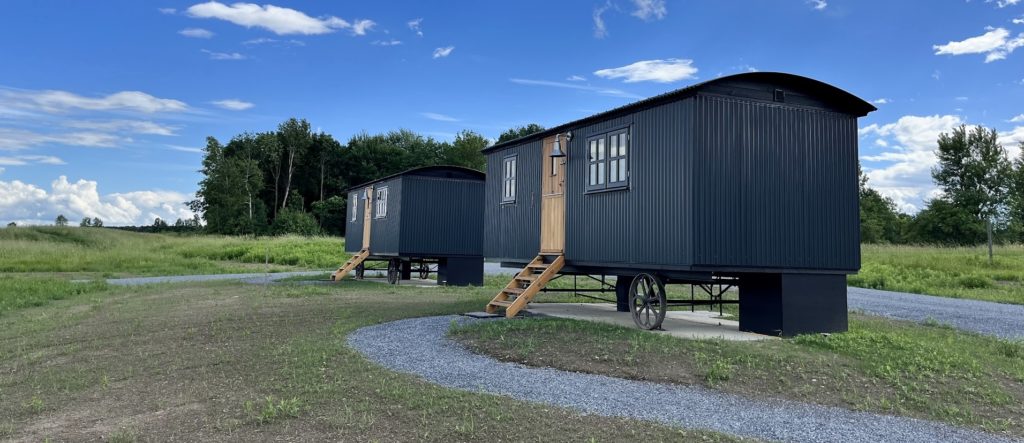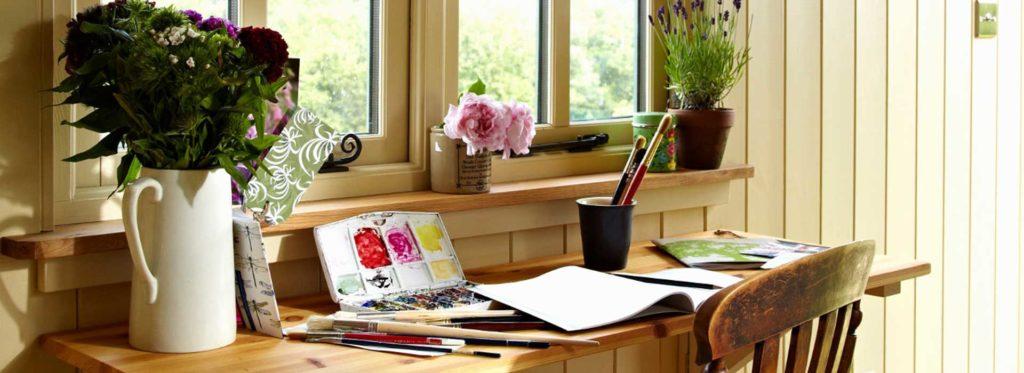The story of the shepherd’s hut chassis
Cast iron. It sounds strong, reliable, long lasting. So much depends upon iron. The human body contains about 4 grams of the element; even the flow of oxygen around our bodies depends upon it. In the big scheme of things perhaps our huts are but mere tiny houses on wheels, but they sit supported on the most abundant element, by mass, in the Earth’s crust.
Many years ago we restored a Victorian shepherd’s hut with only ‘three wheels on the wagon,’ but the three wheels were of a really interesting pattern. We took one to the foundry and made a sand cast copy to make up a full set. The inspiring shapes made us think we should do a similar design for our own Plankbridge wheel. The very skilled pattern makers (what a craft that is) carefully made the mould and the flower shaped Plankbridge wheel was born. We started with all four wheels the same size, it being too big a stretch to get two patterns made at the time. It wasn’t long before we commissioned a bigger wheel pattern, thereby keeping to the tradition of big wheels on the fixed axle and small wheels on the steering end.
The History of Cast Iron
Cast iron is a mix of iron and carbon. It is the result of iron ore being heated to 1500 degrees to extract the molten metal. It was once they worked out this process in times past that humans moved from the bronze age to the iron age.
The industrial revolution is when cast iron took off and changed the World. In 1708 a chap called Abraham Darby headed to Coalbrookdale in Shropshire to make cooking pots. He developed sand casting, where the molten iron is poured into a sand mould. He later used locally sourced coking coal instead of coppice wood charcoal to power the blast furnaces, and that really got things moving. It’s well worth visiting the area, lots of museums including the wonderful Blists Hill Victorian town, tell the story really well. The iconic Aga cooker was manufactured there until very recently.
The industrial revolution was, unfortunately, hugely damaging to the environment. When the flagship bridge was unveiled at Ironbridge, to showcase the potential of the material by using 384 tonnes of cast iron to make the globally important bridge in 1779, the River Severn ran polluted and lifeless below it. Interestingly, in our workshop, we now use local, renewable, coppice wood charcoal rather than fossil fuels to power our forge. We’ve gone full circle. Nowadays most iron seems to be recycled, the material can be repurposed as time moves on.
Plankbridge Chassis
Built to last, our wheels are mounted on solid steel axles, the ends machined on a huge lathe. Steel is a low carbon alloy of iron. It’s all incredibly strong. We have deliberately avoided the vulnerable junction where steel meets a timber axle. That’s where old hut axles rotted as the rain sits on the end of the axle beam. Many of the best shepherd’s hut makers of times past went over to all steel, like Lott and Walne of Dorchester and Reeves of Bratton in Wiltshire.
The axle brackets, outriggers and steering plates are all made from thick steel, which are then blasted, etch-primed and powder coated – this is where the paint finish is baked on in an industrial oven.
Our rolling chassis are a fixed size across the width, and any size of our shepherd’s huts and Cabins can be built upon it. The width, wheel rim to wheel rim, has stayed much the same for generations. I love the continuity of things like that. For example, the width of Roman chariots were dictated by the width of two Roman war horse rear ends fitting between the shafts. The ruts the wheels made on their long straight roads set the track for other wagons that followed. This eventually dictated the width of US railroad tracks, as British engineers went over to build them. The American version of the shepherd’s hut, the sheepherder’s wagon, is probably rooted in that long history too. The American pioneers headed West on wagons based closely on their European heritage.
As an aside I’ve always been fascinated by the unit of one inch being the width of a man’s thumb, ‘inch’ being derived from the Roman word for 1/12th, 12 inches to the foot. Edward II decided to set one inch as a legal standard based on three dried barleycorns laid end to end. Extraordinary really.
The key thing with the chassis is to set it on firm level ground, and some insurance companies may ask for the shepherd’s hut wheels to be fixed down. That’s easy enough to do in a few ways, by chaining down or fixing U bolts over the rims and bolting them to concrete or sleeper base. We are sometimes asked to make wooden chocks to stop the hut rocking.
The basis of human habitation, and life too, is grounded on good foundations. They say all Empires are built on sand. It’s reassuring to think that our huts, and all that we do, is built on solid iron and iron-willed determination.
